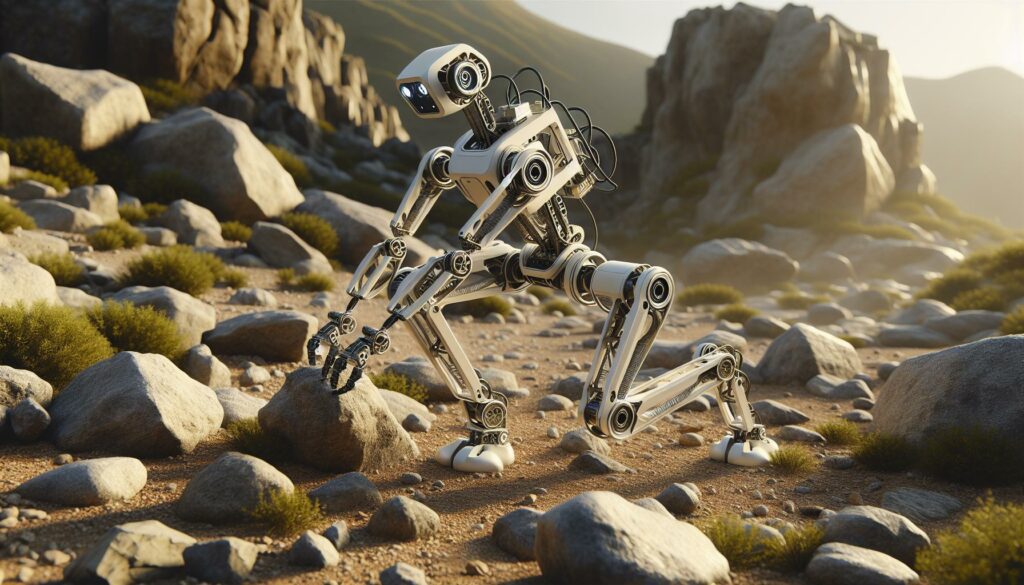In recent years, slip robotics has emerged as a fascinating field that blends the principles of robotics with the unique dynamics of slipping and sliding. Imagine robots that can navigate rough terrains or handle delicate tasks with an ease that mimics natural movement. This innovative approach opens up new possibilities for industries ranging from manufacturing to healthcare.
As I delve into the world of slip robotics, I’m excited to explore how these systems can enhance efficiency and adaptability. By understanding the mechanics behind slipping, we can design robots that not only perform tasks but also learn and adapt in real-time. Join me on this journey as we uncover the potential of slip robotics and its impact on our future.
Key Takeaways
- Innovative Motion Dynamics: Slip robotics combines slipping and sliding principles to enhance robot mobility and adaptability, enabling effective navigation across challenging terrains.
- Widespread Applications: This technology has significant implications in diverse fields such as logistics, healthcare, exploration, and manufacturing, improving operational efficiency and precision in tasks.
- Adaptive Learning: Slip robots utilize advanced algorithms and real-time data analysis to adjust their movement strategies, allowing them to learn and adapt to their environments on the fly.
- Overcoming Challenges: Addressing technical limitations in motion control, sensor integration, and durability is crucial for the advancement and successful implementation of slip robotics.
- Future Innovations: Continuous research focusing on AI integration, soft materials, and collaborative development is set to revolutionize slip robotics, creating more versatile and capable robotic systems.
- Ethical Considerations: As slip robotics gains traction, it’s essential to address safety and accountability to ensure responsible and reliable deployment in various industries.
Slip Robotics
Slip robotics integrates the principles of slipping and sliding into robotic design, enhancing movement and manipulation capabilities. These robots excel in navigating rugged terrains, utilizing the dynamics of slipping to adapt to various surfaces. This ability supports tasks that require precision and agility, making slip robotics applicable in sectors like manufacturing, logistics, and healthcare.
Slip robots employ unique mechanisms to control their movement. They leverage friction and momentum, allowing them to traverse obstacles and uneven ground effectively. For instance, in healthcare, slip robots can assist with delicate surgeries, where subtlety and accuracy are paramount.
Research into slip robotics is advancing rapidly. Engineers are developing algorithms that enable robots to learn from their environments, effectively adjusting their movement and strategies in real-time. This adaptability significantly broadens their operational scope, making them valuable tools in complex settings.
Examples of slip robotics technology include soft robotic grippers and legged robots designed for exploration. These innovations showcase the potential of slip mechanics, pushing the boundaries of what robots can achieve in diverse applications. The ongoing exploration of slip robotics promises to revolutionize multiple industries, enhancing efficiency and effectiveness.
Key Principles of Slip Robotics
Slip robotics relies on the mechanics of slipping and sliding, allowing for enhanced mobility and adaptability in robots. Understanding these principles illuminates their practical applications across various sectors.
Mechanics of Slip Motion
Slip motion occurs when friction between a surface and an object causes the object to slide. This phenomenon can be broken down into key components:
- Friction Coefficient: The ratio of the force of friction between two surfaces to the force pressing them together influences slip behavior. Higher coefficients indicate stronger friction, while lower values allow for more sliding.
- Momentum Transfer: Slip robots utilize momentum transfer to navigate obstacles. As these robots engage with surfaces, they exploit kinetic energy to shift and slide, allowing for agile maneuvers.
- Adaptive Control: Advanced algorithms enable real-time adjustments in slip robotics. Robots analyze real-time data from their surroundings, modifying their movement strategies to maintain stability and effectiveness.
- Surface Interaction: Different terrains evoke distinct responses from slip robots. By understanding surface properties—like texture and rigidity—engineers design robots to optimize their movement on varied landscapes.
Applications of Slip Robotics
Slip robotics finds utility in numerous fields, providing innovative solutions to complex problems. Some prominent applications include:
- Logistics: In warehouses, slip robots navigate precarious environments, transporting goods efficiently over uneven surfaces. Their adaptability enhances productivity in logistics operations.
- Healthcare: In surgical settings, slip robots perform delicate tasks, using soft robotic grippers that mimic human dexterity. This precision improves patient outcomes and streamlines medical procedures.
- Exploration: Robotic explorers equipped with slip mechanics traverse rugged terrains, such as Mars’ surface or underwater environments. Their ability to adapt to challenging conditions makes them invaluable for scientific missions.
- Manufacturing: In manufacturing units, slip robots excel in environments with variable floor conditions. Their capability to manipulate slippery or unstable surfaces leads to safer and more effective production processes.
Benefits of Slip Robotics
Slip robotics offers significant advantages in mobility and adaptability, enabling efficient navigation and task performance across various sectors. The unique mechanics of these robots enhance their functionality in challenging environments.
Enhanced Mobility
Enhanced mobility is a key benefit of slip robotics. These robots utilize slipping dynamics to traverse uneven surfaces more effectively. By applying principles of momentum and friction, they adapt to various terrains, increasing their ability to navigate obstacles. For instance, legged slip robots can scale rocky landscapes, while those equipped with soft grippers can maneuver through tight spaces. Research indicates this adaptive movement leads to improved operational efficiency, allowing robots to execute tasks that traditional robots find challenging.
Versatility in Various Environments
Versatility in various environments is another crucial advantage of slip robotics. These robots excel in handling diverse conditions, from smooth floors to rugged outdoor terrains. Their design incorporates the ability to adjust movement strategies based on surface interactions. Examples include robots that switch between walking and sliding to optimize energy use in manufacturing settings or robots equipped for delicate tasks in healthcare environments. Their adaptability enhances performance across sectors, making slip robotics invaluable for industries requiring both precision and flexibility.
Challenges in Slip Robotics
Slip robotics faces several challenges that hinder its widespread implementation. Addressing these hurdles requires a combination of technical advancements and innovative solutions.
Technical Limitations
Technical limitations form a significant barrier in slip robotics development. Motion control precision often suffers due to the unpredictable nature of slipping dynamics. Factors such as surface roughness and environmental conditions can lead to inconsistent movement patterns. Additionally, sensor integration poses challenges. Sensors must accurately interpret varying friction levels and adapt quickly, which demands sophisticated algorithms and processing power. Durability is another concern; slip robots must withstand harsh conditions, which can affect their mechanical components and longevity.
Solutions and Innovations
Innovative solutions address the challenges in slip robotics effectively. Advanced algorithms are being developed to improve real-time movement adjustments based on environmental feedback. For instance, researchers create adaptive control systems that utilize machine learning to enhance navigation on complex terrains. The integration of advanced sensors, like Lidar and tactile sensors, improves environmental perception, allowing robots to better understand their surroundings. Material innovations, such as the use of flexible, robust components, enhance durability, ensuring long-term performance in rugged conditions. Collaborative efforts in the robotics community drive the exploration of alternative designs and strategies, pushing the boundaries of what slip robotics can achieve.
Future Directions of Slip Robotics
Future developments in slip robotics focus on enhancing adaptability, efficiency, and application across diverse sectors. Researchers prioritize creating slip robots that learn from their environments, enabling real-time adaptability to changing terrains.
Design improvements aim at optimizing mobility through advanced materials that enhance friction management and durability. Engineers explore soft materials that respond dynamically to contact forces, allowing robots to adjust slipping mechanisms based on surface characteristics.
Increased integration of AI and machine learning algorithms represents another significant direction. These technologies facilitate predictive analysis, enabling robots to anticipate environmental changes. With sensors such as Lidar and tactile arrays, slip robots achieve greater situational awareness and can modify their movements effectively.
Collaboration across disciplines will drive innovation in slip robotics. Partnerships between robotics experts, material scientists, and AI specialists enable the development of more sophisticated robotic systems. Such collaborations enhance research efforts and streamline the deployment of robots in real-world applications.
Market demand for versatile robotics solutions continues to grow, leading to expansions in logistics, healthcare, and exploration. Slip robotics could transform industries by improving efficiency in difficult tasks, such as debris removal in disaster responses or surgical procedures requiring precision.
Subsequently, ethical considerations surrounding slip robotics are becoming increasingly relevant. As robots take on more intricate roles, discussions about safety and accountability must advance to ensure reliable integration into society.
Overall, the future of slip robotics holds immense promise, addressing challenges and unlocking new capabilities. The continuous exploration and development will surely redefine how robots operate across various environments.
Robots in Industries
The potential of slip robotics is truly exciting. As these robots continue to evolve they’ll redefine how we approach various tasks across multiple industries. Their ability to adapt in real-time to challenging environments is a game changer for sectors like logistics and healthcare.
I’m particularly enthusiastic about the advancements in algorithms and materials that will enhance their performance. The integration of AI and machine learning will undoubtedly push the boundaries of what slip robots can achieve.
With ongoing research and collaboration in this field I believe we’re just scratching the surface of their capabilities. Slip robotics not only promise to improve efficiency but also to transform our understanding of robotic mobility. The future looks bright for this innovative technology.

